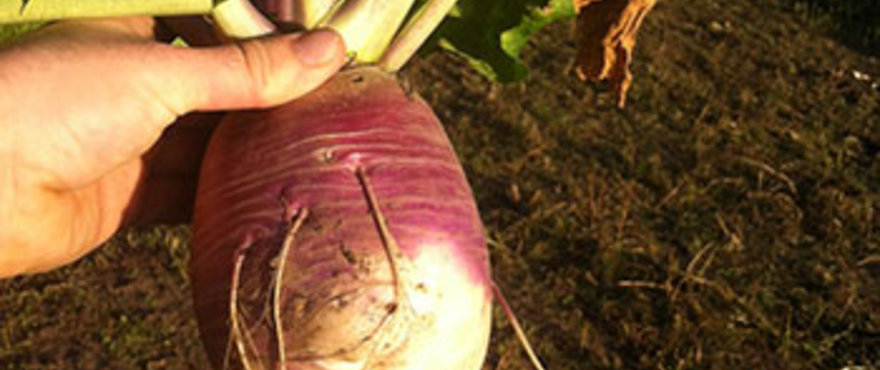
Brassica & Forage Crops
Download our guide for practical management advice.

Within the Brassicas family, turnips are the quickest species to establish

Within the Brassicas family, turnips are the quickest species to establish. This multi-purpose forage & catch crop offers excellent autumn & winter feed potential. The very vigorous Barenbrug-bred diploid turnip combines higher leaf production and a purple tankard root (50% of the bulb is above the soil surface), with high sugar and dry-matter content. Ideally suited for grazing with sheep and cattle.
Advantages
• Bred by Barenbrug for leaf production, it out yields most other turnip varieties available
• Deep root system to rich essential nutrients deep in the soil
• High sugar & dry matter content for a low cost feed solution
Barkant is a truly improved forage turnip variety. Bred by Barenbrug for leaf production, it out yields most other turnip varieties available. Barkant is a popular variety in countries where the use of Brassicas already is more common: New Zealand, Australia, England and many European countries.The high sugar content in Barkant provides winter hardiness and increased palatability.
Barkant has the potential of being grazed multiple times. The first grazing however, will be the most important one. Both sheep and cattle can graze turnips. Strip-grazing prevents both yield and quality losses due to tramping and polluting. It is also important not to overfeed the livestock when they are allowed to graze the turnips at first. Extreme high dry matter intake of Turnips (and other Brassicas) can cause health problems. Therefore, livestock should be allowed to adjust to the change of diet.
Planting and establishment
Barkant requires good soil drainage and a pH between 5.3 and 7.5. Seed should be planted in a firm, moist, seedbed.
While not always thought of as a cover crop, Barkant turnips often double as a forage and cover crop. Barkant turnips provide a massive amount of dry matter that helps suppress weeds, control erosion, and can be stock piled for winter forage.
Barkant turnips have a deep root system that allows them to stay green longer than most summer cover crops. These tap roots pull up and recycle nutrients that are too deep for crop roots, loosening the soil and providing channels for air, water, and crop roots.
Brassicas should be planted no longer than 2 consecutive years to prevent disease and pest problems.
Stubble Turnips have a high leaf to bulb ratio resulting in high levels of protein. The tankard shape bulb enhances utilisation by the grazing animal and these can be fed to sheep or cattle
Stubble Turnips have a high leaf to bulb ratio resulting in high levels of protein. The tankard shape bulb enhances utilisation by the grazing animal and these can be fed to sheep or cattle
Stubble Turnips have a high leaf to bulb ratio resulting in high levels of protein. The tankard shape bulb enhances utilisation by the grazing animal and these can be fed to sheep or cattle

Download our guide for practical management advice.